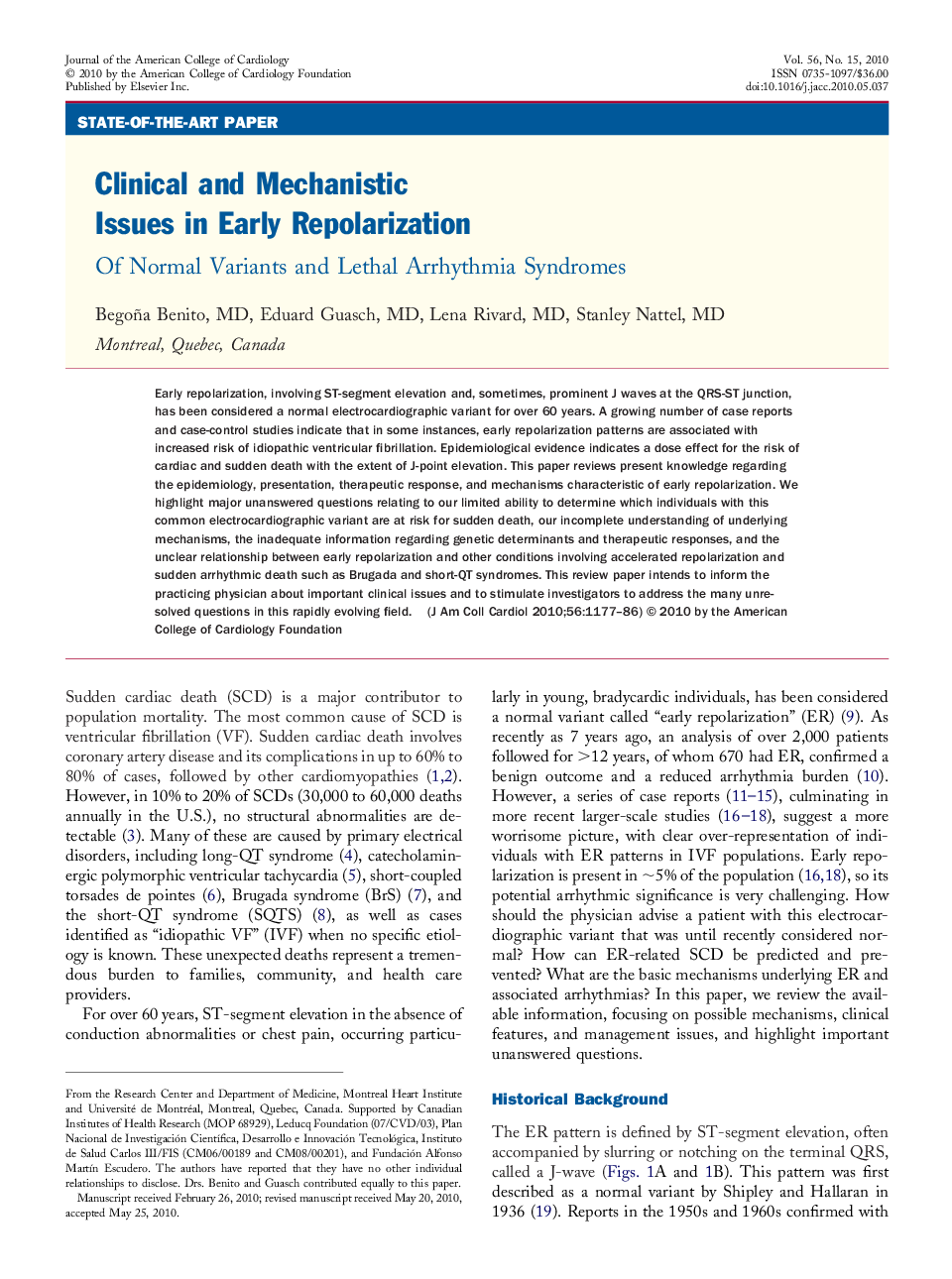| کد مقاله | کد نشریه | سال انتشار | مقاله انگلیسی | نسخه تمام متن |
|---|---|---|---|---|
| 2948957 | 1577295 | 2010 | 10 صفحه PDF | دانلود رایگان |

Early repolarization, involving ST-segment elevation and, sometimes, prominent J waves at the QRS-ST junction, has been considered a normal electrocardiographic variant for over 60 years. A growing number of case reports and case-control studies indicate that in some instances, early repolarization patterns are associated with increased risk of idiopathic ventricular fibrillation. Epidemiological evidence indicates a dose effect for the risk of cardiac and sudden death with the extent of J-point elevation. This paper reviews present knowledge regarding the epidemiology, presentation, therapeutic response, and mechanisms characteristic of early repolarization. We highlight major unanswered questions relating to our limited ability to determine which individuals with this common electrocardiographic variant are at risk for sudden death, our incomplete understanding of underlying mechanisms, the inadequate information regarding genetic determinants and therapeutic responses, and the unclear relationship between early repolarization and other conditions involving accelerated repolarization and sudden arrhythmic death such as Brugada and short-QT syndromes. This review paper intends to inform the practicing physician about important clinical issues and to stimulate investigators to address the many unresolved questions in this rapidly evolving field.
Journal: Journal of the American College of Cardiology - Volume 56, Issue 15, 5 October 2010, Pages 1177–1186